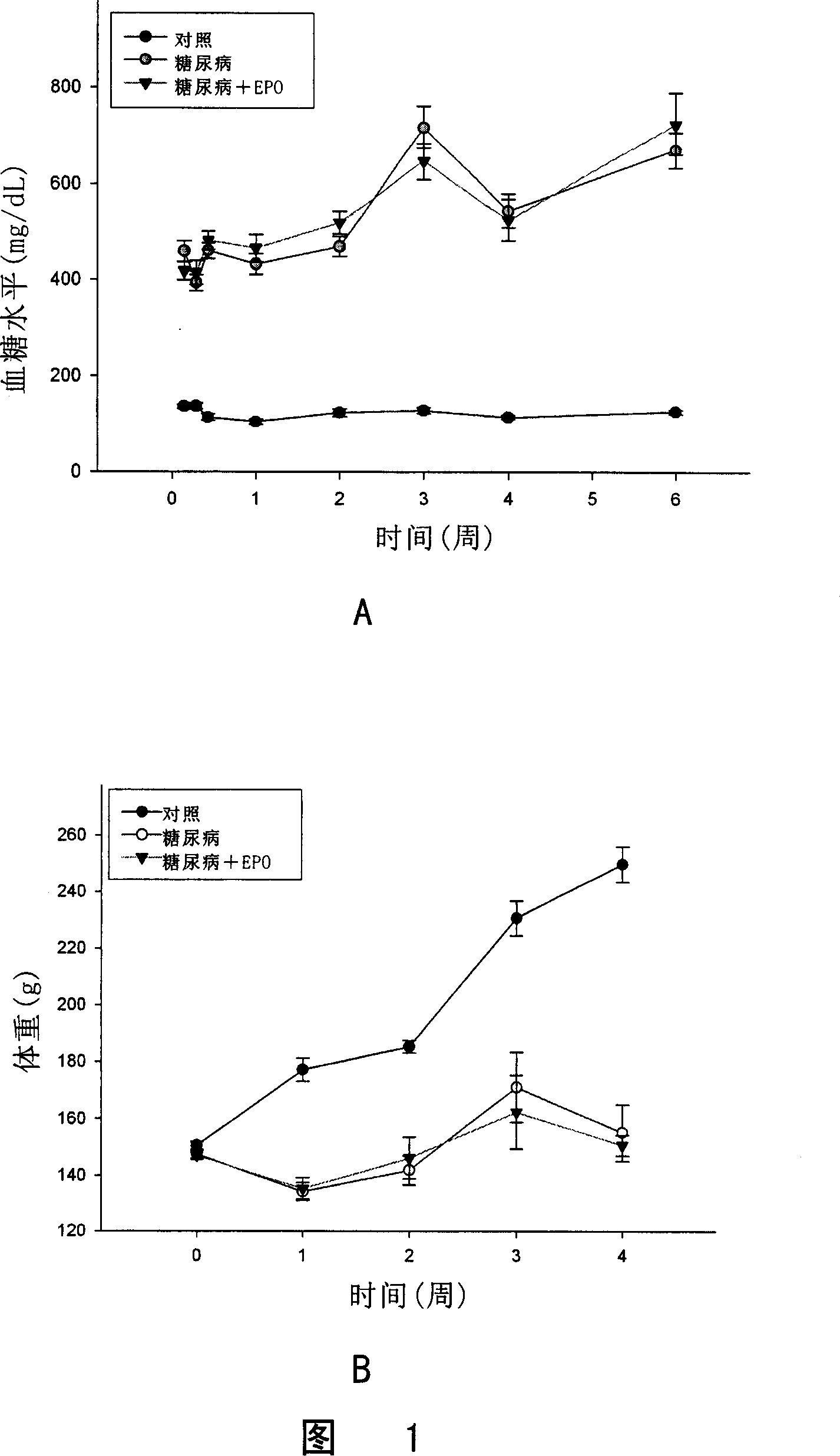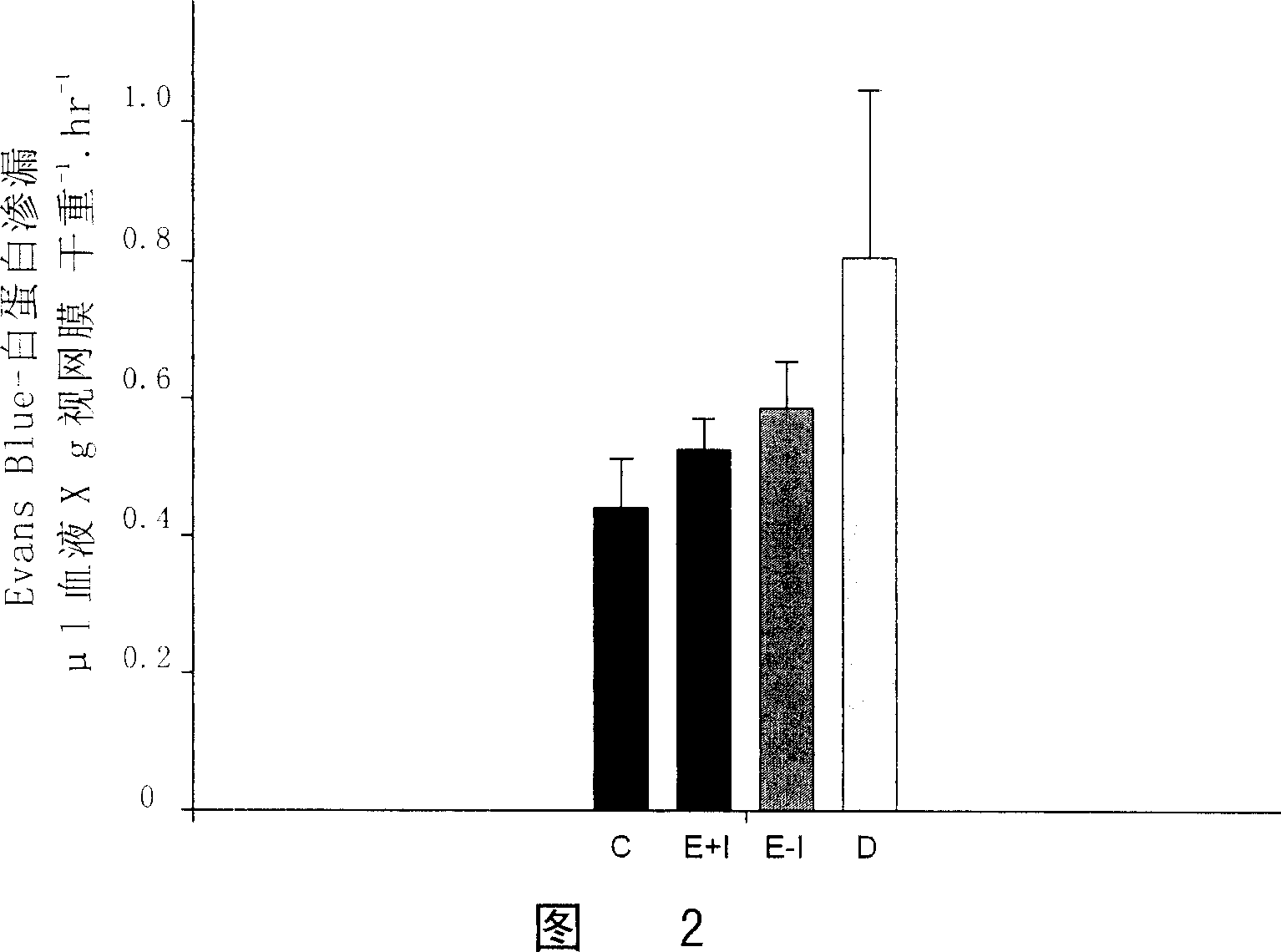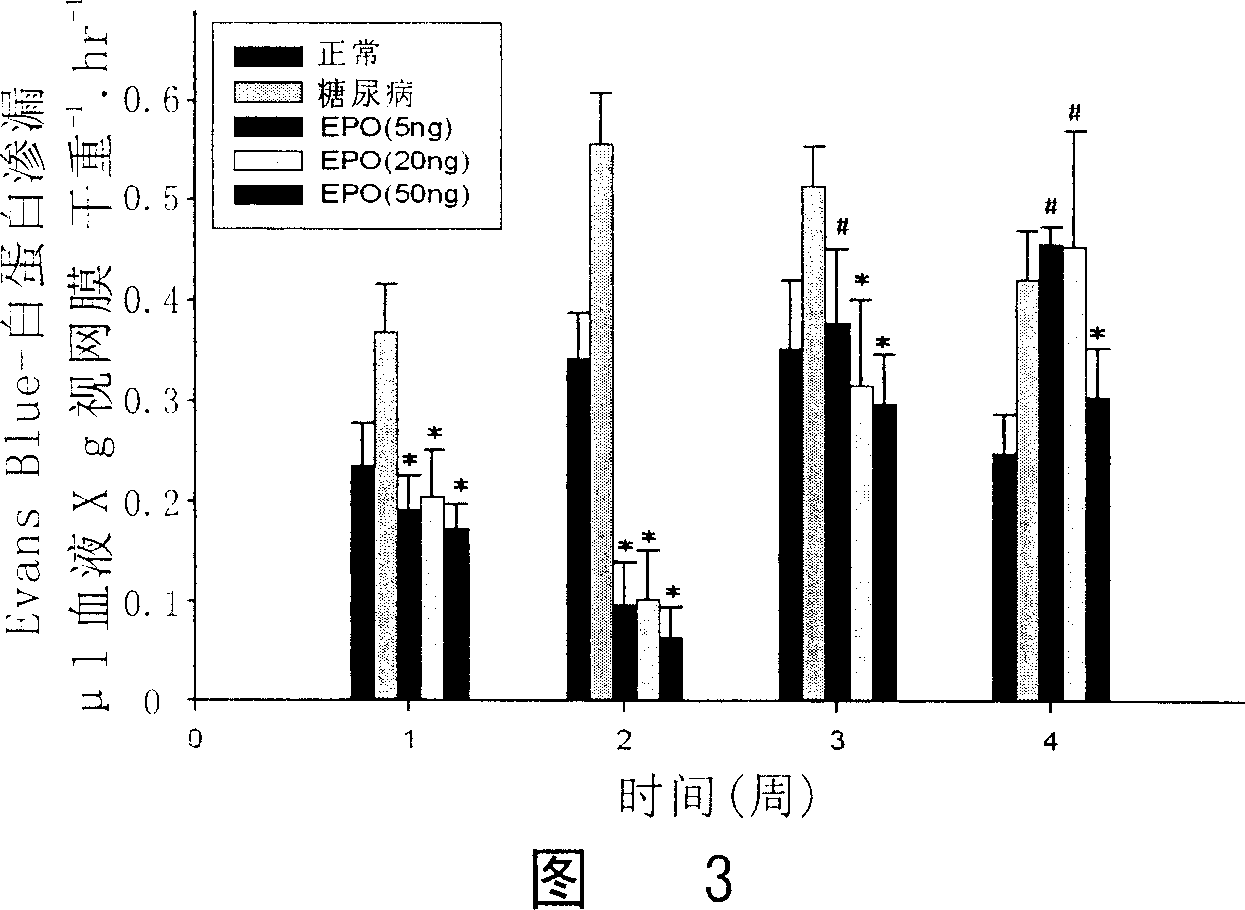Function of erythropoietin in the preventing and treating of retinal injury
A technology for erythropoietin and retinal damage, applied in the field of biomedicine, can solve the problems of inability to reach the eye, inability to protect the retina, side effects, etc.
- Summary
- Abstract
- Description
- Claims
- Application Information
AI Technical Summary
Problems solved by technology
Method used
Image
Examples
Embodiment 1
[0146] Example 1 Blood glucose and body weight changes in experimental rat diabetes model
[0147] After grouping according to the method described in I and preparing rat diabetes models, the following indicators were mainly observed in this embodiment: (1) changes in blood sugar and (2) changes in body weight after the rats were injected with STZ.
[0148] As a golden indicator for observing diabetes, changes in blood sugar can more accurately reflect the condition of diabetes in rats and the stability of the model. In the present invention, after a single intraperitoneal injection of STZ, the blood sugar rises sharply and briefly, and falls back to the normal level within 24 hours. Beginning the next day, blood glucose increased again and remained between 400-700 mg / dL for the rest of the time, indicating a stable diabetes model (see Figure 1A). At the same time, it can be seen that the blood sugar levels of rats in the diabetes group and the rats in the treatment group are b...
Embodiment 2
[0150] Example 2 Early blood-retinal barrier dysfunction in diabetic rats and the protective effect of intravitreous injection of EPO
[0151] The inventors used the Evans Blue method to quantitatively detect the permeability of the blood-retinal barrier. This assay is sensitive to disruption of the blood-retinal barrier in early diabetic rats. Evans Blue is mainly bound to albumin in the blood, so it cannot leak out of blood vessels under normal conditions. The diabetes model established by the inventors using STZ belongs to type 1 diabetes, which is prone to diabetic ketoacidosis. Take into account that blood pH may affect the binding of Evans Blue to albumin. At the same time, the vascular permeability of free EvansBlue increases under acidic conditions. In order to exclude the influence of acidic conditions on the permeability of Evans Blue. The present inventors used a small amount of insulin (4IU / week) subcutaneous injection to prevent the occurrence of diabetic keto...
Embodiment 3
[0155] Example 3 The protective effect of EPO on the blood-retinal barrier is dose-dependent
[0156] Diabetic rats received intravitreal injection of different doses of EPO (0.05-200ng / eye) at the time of onset, and injected equal volumes of normal saline into the vitreous cavity of normal control rats and diabetic control rats. After two weeks, the permeability of retinal Evans Blue in each group was measured.
[0157] The results showed that the protective effect of EPO on the blood-retinal barrier had an obvious dose-dependent relationship. As shown in Figure 4, low doses of EPO had no effect. When the dose was increased to 5ng / eye, it began to show a protective effect, and the protective effect was the best at 50ng / eye. However, given a high dose (200ng / eye), the protective effect of the drug on the blood-retinal barrier was weakened. But this attenuated effect, compared with the diabetic control group, was still significantly protective. Therefore, according to the r...
PUM
 Login to View More
Login to View More Abstract
Description
Claims
Application Information
 Login to View More
Login to View More - R&D
- Intellectual Property
- Life Sciences
- Materials
- Tech Scout
- Unparalleled Data Quality
- Higher Quality Content
- 60% Fewer Hallucinations
Browse by: Latest US Patents, China's latest patents, Technical Efficacy Thesaurus, Application Domain, Technology Topic, Popular Technical Reports.
© 2025 PatSnap. All rights reserved.Legal|Privacy policy|Modern Slavery Act Transparency Statement|Sitemap|About US| Contact US: help@patsnap.com



